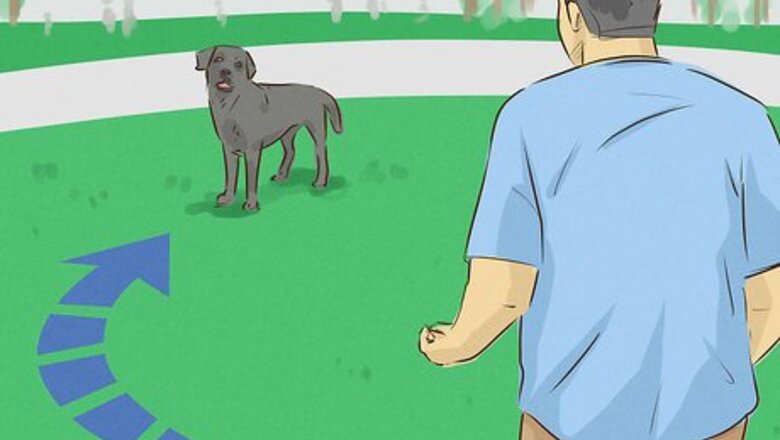
views
Adjusting Your Body Language

Move slowly around the dog. If you're quick or unpredictable in how you walk or move, the dog might be frightened by you. Make the effort to be slow and predictable in how you move when you're around the dog. Tip: Instead of approaching the dog head on, walk towards the dog in a curved line. This will prevent the dog from feeling threatened. Moving slowly will give the dog a chance to inspect you and watch your body language.
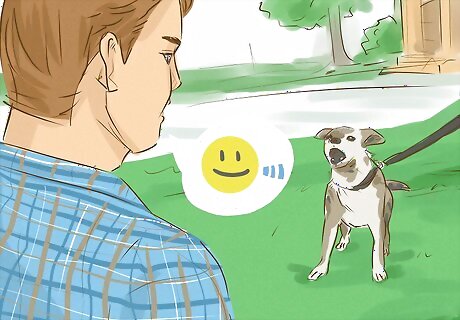
Speak to the dog in a calm voice. This is especially important if the dog is barking or appears frantic. Talking to the dog in a soothing voice can make it feel relaxed and more comfortable around you. For example, say, "Hi Sammie. You seem excited about something. How are you doing?"

Squat or sit down so you're closer to the dog's level. Some dogs are intimidated by people towering over them, so get down when you're close to the dog. You might find that the dog is curious about you once you get down on its level. Don't be surprised if the dog is more interested in sniffing your shoes than checking you out. Your shoes carry a lot of scents that the dog might try to figure out.

Smile at the dog and make minimal eye contact. You can make direct eye contact, but avoid staring for very long or the dog may feel threatened or challenged. Glance at the dog and smile. This can make the dog feel relaxed. Research shows that dogs can detect anger in facial expressions, so smiling is an important way to appear friendly. EXPERT TIP Sheri Williams Sheri Williams Certified Dog Trainer Sheri Williams is a Certified Dog Trainer and Behaviorist and the Owner of sheriwilliams.com, a business that specializes in teaching veterans how to turn their dogs into service dogs or emotional support animals to assist with PTSD. Based in the Los Angeles, California metro area, Sheri has over 20 years of dog training experience and also runs a general dog training practice specializing in rehabilitating dogs through positive reinforcement training techniques. She is certified by The Animal Behavior and Training Association. Sheri Williams Sheri Williams Certified Dog Trainer If dogs make you nervous, start by approaching small, friendly dogs. If dogs make you nervous but you want to get more comfortable with them, pick a small, super-friendly one to interact with. Ask the owner ahead of time if their dog is nice with strangers. Then, instead of reaching for them, let them come to you.

Pet the dog gently if it comes close to you. Give the dog time to get comfortable, and gradually extend your hand if it comes up to you. Slowly pet the dog and see how it reacts. If the dog stays near you or moves even closer, it enjoys the attention. If the dog pulls away, don't continue to pet it. Give the dog a little space and see if it comes back. The dog might just want a little more time to observe you. Don't immediately touch the dog's head, as they might take that as a threatening gesture.

Play with the dog or offer it a toy. If the dog seems comfortable around you, spend some time playing with it. Dogs love to play tug-of-war with a rope, fetch a ball or stick, and play tag with you. You can also give the dog a toy, such as: Tennis balls Soft toys Squeaker toys

Offer the dog a treat. If you're interacting with someone else's dog, ask them if it's all right for you to give it a treat. Hold a dog treat in your open palm and slowly hold it out to the dog. Let the dog come over to you to get the treat. Don't expect the dog to do tricks to earn the treat if you aren't familiar with the dog. An anxious dog may not want to approach you, even to get treats. Instead of waiting for the dog to come to you, toss the treats so they land near the dog. This will help build the dog’s trust and confidence.
Paying Attention to a Dog's Body Language
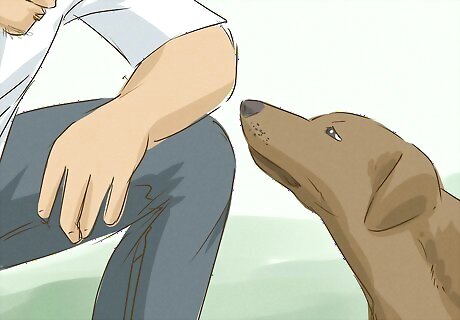
Let the dog smell you if it looks alert and curious. Instead of rushing over to the dog and trying to hug it, determine if the dog is interested in you. It might stand up straight and even lean forward a little while keeping its tail parallel to the ground. The dog may come over to sniff your open hand. You'll notice the dog's eyes are wide and its ears are directed forward as if the dog is trying to take in the sight and sound of you.
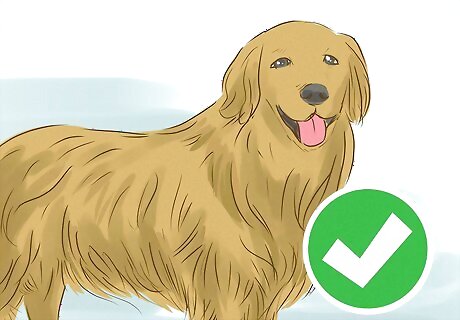
Approach the dog if it looks relaxed. You can initiate contact if the dog's body looks comfortable. Its tail may be low to the ground and its ears are pointing up instead of forward. A calm dog might also have its mouth open so its tongue hangs out a little. Remember that even though a dog appears relaxed, you should still approach it slowly and calmly.

Recognize when the dog wants to play. If a dog thinks you're friendly and wants to play with you, it may bark and lower its front paws. Its tail and ears will perk up before the dog starts moving around you energetically. You might notice the dog's pupils dilate and it will keep its mouth open.
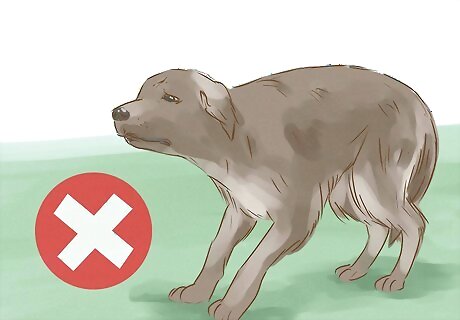
Give the dog space if it looks frightened or worried. The dog may not want to interact if it turns its head away from you, lowers its ears, and keeps its head down. If it's afraid, its paws might look sweaty and it will keep its body low. If the dog is showing these signs, don't get close to it or attempt to engage it. Even if the dog just seems a little unsure about you, leave them alone until they're more comfortable.














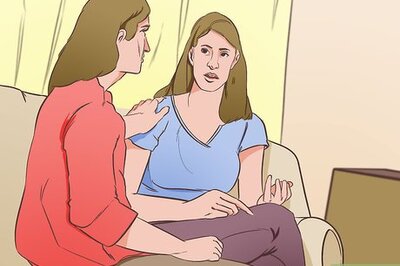





Comments
0 comment